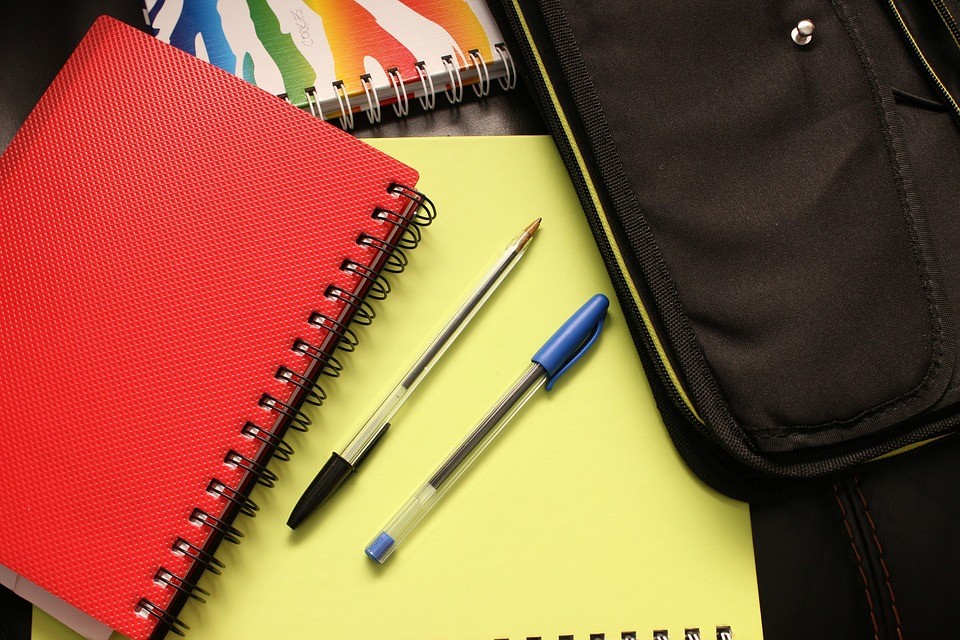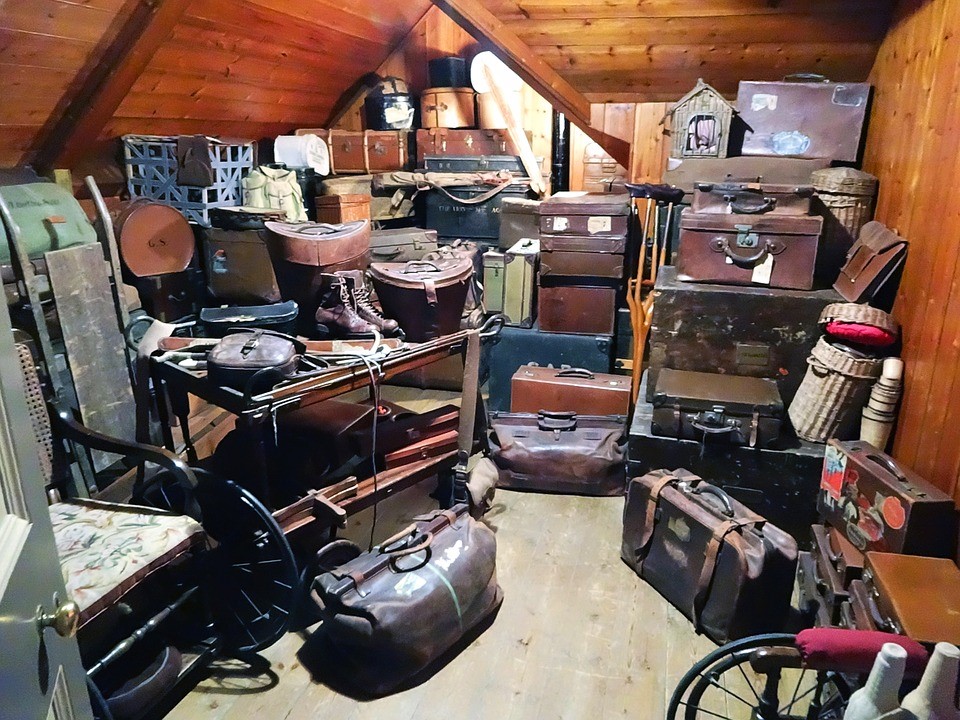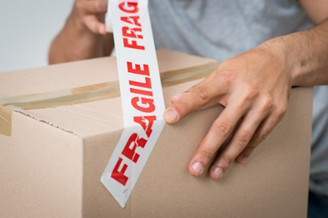Organizing a Big Move
If you're getting ready to move, it can feel overwhelming. Not only do you need to get things ready at your new home, but you also have to get all your belongings out of your old home and prepare it for the next residents.
Preparing your new home will involve inspecting it, getting utilities turned on and having your household items delivered. Dealing with your old home will involve getting rid of anything you don't want to keep, packing up and moving your belongings, and having utilities turned off.
With so much to do, it's important that you stay organized. If you don't keep track of what's going on, it can be easy for things to get left behind; you might arrive at your new home only to discover you don't have power or you have no idea how to file a claim if something is damaged during your move. Here are some things that you can do to keep your move running smoothly.

Use a Binder to Keep Track of Paperwork
There's a lot of paperwork associated with a move, and this is particularly true if you're buying a new house. With an apartment, you may only need to keep a copy of your lease. However, with a home, you may need to keep copies of inspections, your mortgage paperwork and homeowner's insurance documents, just to name a few.
Creating a moving binder will allow you to keep track of your paperwork as well as the timeline for your move. Along with any documents related to your new home, you may also want to use a moving binder to organize estimates, receipts and your calendar.
Estimates
You may receive a number of estimates as you go through the process of moving. If you're moving into a new house, you may need estimates on repair work or upgrades. You are likely to get a few estimates from moving companies; experts recommend that you get more than one estimate. Should you decide to store some of your household goods during your move, such as while waiting for your new home to be ready, you will probably want to get estimates from storage facilities.
Receipts
Along with estimates, you'll be given a number of receipts and related paperwork. In addition to receipts for deposits for utilities, you may also want to hang onto final bills from utility companies that show your services have been disconnected.
Some apartment complexes will give you paperwork stating what, if any, deposits you'll be getting back and if you owe them anything for repairs or cleaning. When a mover arrives to pick up your household goods, you'll get a receipt called a bill of lading that lists the cost for transporting your belongings as well as what is being transported. It's important to hang onto this paperwork in case there are any questions or confusion about the status of accounts, what has been paid and what has been promised.
Calendar
There are a number of important dates in a move, and you'll want to be sure that you're aware of them and verify that certain things take place. It's a good idea to have power and electricity turned on at your new home before you arrive so that you're not sitting in a dark home for a day or two. On the day scheduled, call the utility companies and verify that services have been activated.
You'll also want to make a note of days and times for dropping off keys for your old home, picking up keys for your new home and when movers will arrive to pick up your household items. Your calendar can remind you when people are supposed to arrive to handle repairs at your new or old home as well as when installation technicians are supposed to arrive to install your TV, phone and internet services.

Sort What You Want to Keep and Give Away
There are probably a lot of items that you have no desire or need to bring with you to your new home. Old clothing, power cords for electronics you no longer have and furniture that you intend to replace can all be left behind. Outside of throwing away these items, you can sell things online, hold a garage sale or donate them to charity. All of these options have a potential financial benefit to them.
You can sell larger items, like furniture, through online classifieds. As long as things are in decent shape and work, people will normally come to your home and take them away for you. For smaller and more collectible items, you may be able to make some good money from them online. A garage sale is a good catch-all that allows you to sell just about anything in your home that you don't want anymore.
You can also donate items that you don't want to a charity. Several charities will take everything from clothing to furniture, and you may be able to get a tax write-off for making a charitable donation. Many charitable organizations will send a truck to your door to pick up larger items, and you can drop off clothing, toys and books at stores or at drop boxes that can be found in shopping centers. If you intend to take advantage of a tax write-off, you will want to get a receipt.
Packing Up Your Home
 Before you start packing, you may want to find out exactly what type of supplies and how much of them you'll need for your move. It's frustrating to run out of boxes, tape, labels or packing peanuts when you're in the middle of packing, so there are websites that can help you determine what supplies you'll need to move.
Before you start packing, you may want to find out exactly what type of supplies and how much of them you'll need for your move. It's frustrating to run out of boxes, tape, labels or packing peanuts when you're in the middle of packing, so there are websites that can help you determine what supplies you'll need to move.
Once you have packing supplies, you'll need to sort what you decided to keep. One good way to ensure that things are tracked, handled appropriately and put in the correct spot in your new home is to use a labeling system. A color-coded labeling system may help you sort which room each box or item goes into. Labeling will help ensure that you don't have to move a bunch of furniture and boxes into different rooms after the movers have unloaded them. It's also a good idea to label items that are fragile or boxes that contain fragile items.
You'll want to know which items need special care when they are being moved. If the item in question needs to be taken apart, such as a table with a glass insert, you can put this on the label. By doing so, the movers will know which items they need to take special care with.
Labeling boxes as fragile will let you know which boxes to check when you get to your new home. Moving companies normally put a time limit on when you can file a claim for items damaged during the move. If you know which boxes have delicate things in them, you won't waste time going through boxes without breakable items in them checking to make sure they're in one piece.

Make an Inventory
An inventory will help ensure that everything you want makes it to your new home. If you're using a color-coded labeling system, you can just count the number of boxes and items of furniture that go into each room of your new home. When creating your inventory, it's a good idea to identify any fragile or very valuable items and make sure that movers are aware that these items need special care.
As you go through your inventory and determine which items are fragile or very valuable, it may help you determine what type of moving protection you want. There are often two types of protection available to you. The default, which many moving companies throw in at no additional charge, is released value protection. You are reimbursed $0.60 for every pound a damaged item weighs. If a heavy item like a 200-pound sofa is damaged, you'll get $120 for it.
If you have a number of high-value items, it may be better to pay a little extra and get full-value protection. This type of coverage requires a mover to replace or repair any damaged items back to their original condition. However, you must identify fragile items as such and list any items that are worth more than $100 per pound to be able to file claims for them.
Once you arrive at your home, you'll be able to use your inventory to check that everything arrived at your new home in the same condition it left your old house. With that done, you can focus on settling into your new neighborhood.

